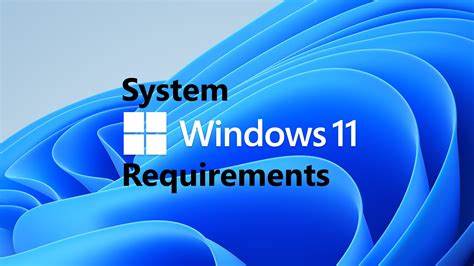Tech
Windows 11 minimum system requirements explained
Discover the minimum system requirements for Windows 11, including processor, RAM, storage, TPM, and Secure Boot explained for easy PC compatibility checking.
Windows 11 introduces a modern interface and new features but also comes with specific hardware requirements. Knowing the minimum system requirements helps determine if your PC can run Windows 11 smoothly or if upgrades are necessary. This article breaks down all Windows 11 system requirements in simple terms, explaining each component’s role and how to check compatibility.
Why Are Minimum System Requirements Important?
Microsoft sets minimum hardware standards to ensure a consistent and secure user experience. Meeting these requirements guarantees:
- Smooth performance
- Access to all features and updates
- Security enhancements
- Compatibility with apps and peripherals
Understanding these specs lets you prepare for installation or decide on upgrades.
Windows 11 Minimum System Requirements Overview
| Component | Minimum Requirement |
| Processor | 1 GHz or faster with 2 or more cores, 64-bit |
| RAM | 4 GB |
| Storage | 64 GB or larger |
| System Firmware | UEFI, Secure Boot capable |
| TPM | Trusted Platform Module (TPM) version 2.0 |
| Graphics Card | DirectX 12 compatible with WDDM 2.0 driver |
| Display | >9” with HD Resolution (720p) |
| Internet Connection | Microsoft account and internet required for setup |
Step 1: Processor Requirements
Windows 11 requires a 64-bit processor with at least 1 GHz clock speed and two or more cores. Supported CPUs include:
- Intel 8th Gen or newer
- AMD Ryzen 2000 series or newer
- Qualcomm Snapdragon 850 or newer
The processor powers the overall system performance. Older 32-bit or single-core CPUs aren’t supported, which can block installation.
Step 2: RAM Requirements
A minimum of 4 GB RAM is necessary to run Windows 11. RAM affects multitasking and speed. Systems with less than 4 GB will struggle with modern apps and features.
Step 3: Storage Space
Windows 11 needs at least 64 GB of free storage for installation and future updates. Systems with smaller drives or limited free space will face installation failures or performance issues.
Step 4: System Firmware and Secure Boot
Your PC must use UEFI firmware with Secure Boot enabled. Secure Boot protects your PC from malware attacks during startup. Legacy BIOS systems without UEFI support are incompatible.
You can check this by:
- Pressing Windows + R, typing msinfo32, and opening System Information.
- Look for “BIOS Mode”: it should say UEFI.
- Look for “Secure Boot State”: it should be On.
Step 5: TPM 2.0 Requirement
Trusted Platform Module (TPM) version 2.0 is a security chip that helps with encryption and secure authentication. Windows 11 requires TPM 2.0 for enhanced security features.
To check TPM status:
- Press Windows + R, type tpm.msc, and press Enter.
- TPM Management window shows TPM version and status.
If TPM is disabled, enable it via BIOS settings if your hardware supports it.
Step 6: Graphics and Display
Windows 11 requires a DirectX 12 compatible graphics card with a WDDM 2.0 driver. This supports the new graphical features and animations.
Your display must be larger than 9 inches with at least 720p HD resolution.
Step 7: Internet and Microsoft Account
While not strictly hardware, Windows 11 Home edition requires internet connectivity and a Microsoft account for initial setup. This facilitates synchronization and access to Microsoft services.
How to Check Windows 11 Compatibility
Microsoft provides a tool called PC Health Check to verify if your PC meets requirements. Alternatively, third-party tools like WhyNotWin11 offer detailed compatibility reports.
What If Your PC Doesn’t Meet Requirements?
If your PC fails certain checks:
- Upgrade RAM or storage if possible.
- Enable TPM and Secure Boot in BIOS if disabled.
- Consider hardware replacement for unsupported CPUs or firmware.
- Use workarounds to install Windows 11 on unsupported hardware with risks (not recommended).
Conclusion
Understanding Windows 11 minimum system requirements is crucial before upgrading. Ensuring your PC meets processor, RAM, storage, firmware, TPM, and graphics requirements guarantees a smooth installation and experience. Use compatibility tools to assess your PC and plan upgrades accordingly.

















